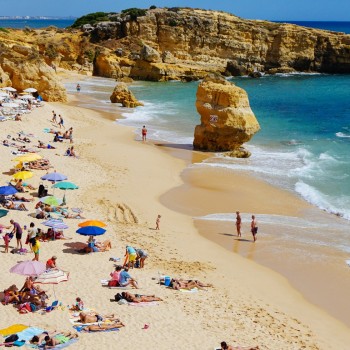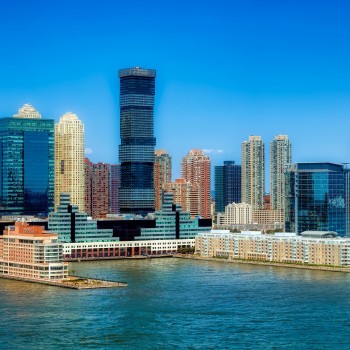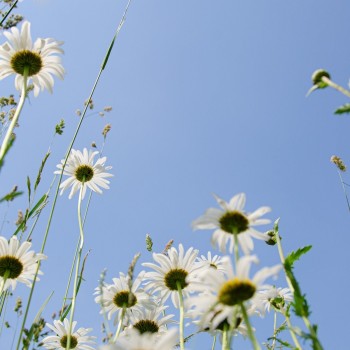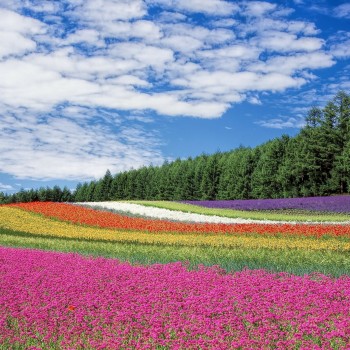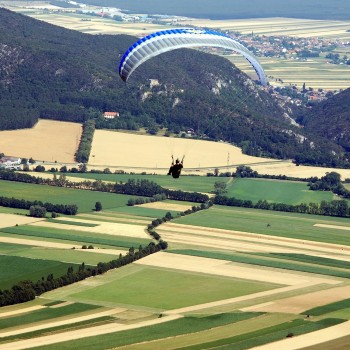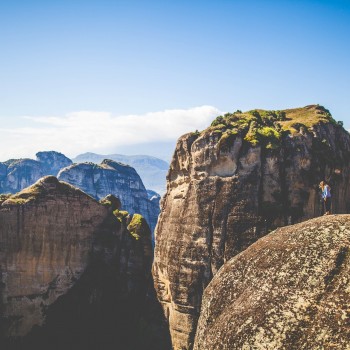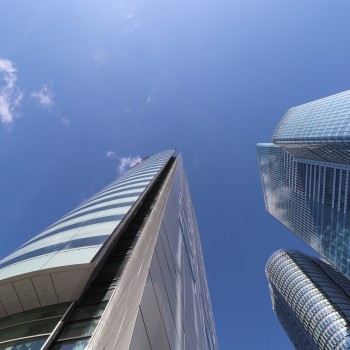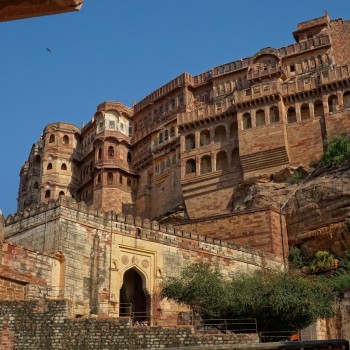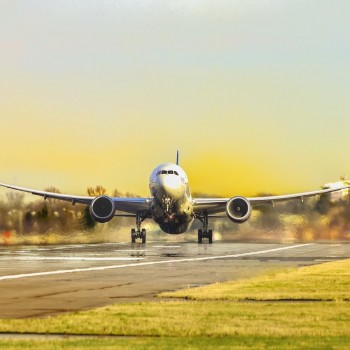Venezuela
Venezuela
Capital city description
Caracas, the capital city of Venezuela, is a progressive city backed by more than four centuries of rich history. Cosmopolitan and fast-paced, the Venezuelan capital is home to an impressive array of cultural activities.
Visitors can explore world-class museums in the daytime, like the national park's wooded slopes, and savor strong coffee at terraced cafes. At night, the city comes alive in salsa clubs, crowded bars, and eclectic restaurants. This exhilarating energy makes Caracas one of the most appealing capitals in Latin America.
Climate
Venezuela's climate varies from tropical humid to alpine, depending on the elevation, topography, and the direction and intensity of prevailing winds.
Seasonal variations are marked less by temperature than by rainfall.
Spring: March to May
Summer: June to August
Autumn: September to November
Winter: December to February
Languages spoken
The official language of Venezuela is Spanish. English is spoken in some hotels and tourist destinations. Chinese language, Portuguese and Italian are the most spoken languages in Venezuela after the official language of Spanish.
Fun/Fascinating Facts
1. Venezuela is blessed with radiant, diverse geography. It has islands, rivers, marshlands, mountains, glaciers, highlands, grasslands (Los llanos), deserts, canyons, mesas, forests, and jungles.
2. Entirely located in the tropics, the country has two types of seasonal weather: the hot-humid season and the hot-dry season. The difference is the amount of rain received during the season.
3. Venezuela has the world's Biggest 8th natural gas reverse. But it is the largest in South America. It has been producing oil for a century, producing 162 million tons of oil, resulting in 4.1% of the entire world's production.
Oil is responsible for generating half of the nation's wealth. It is one of the major oil exporters for many countries. It has the world's largest proven oil reserves with almost 300 billion barrels.
4. Venezuela has the lowest oil prices globally, which cost nearly $0.1 per liter.
5. Venezuela has produced many Miss world and Misses universe compared to the other countries. The list includes Ivian Sarcos, Jacqueline Aguilera, Gabriella Isler, Stefania Fernandez, Dayana Mendoza, Irene Saez and much more contributing to about 22 victories.
Unique Customs/Traditions
- In Venezuela, the main center of the whole life is family. Venezuelans spend much more free time in the family than residents of neighboring Hispanic countries, and often even men refuse their traditional hobbies in favor of children and at home.
- In Venezuela, it is prevalent to make"promises" to God to receive some special favor. The Dance of the Shepherds of the Child Jesus is one of the customs that serve to"pay promises."
- Some significant traditions in society are the carnival, an important festival in Venezuela. The Joropo is the national dance of Venezuela.
Popular universities
| Name | Description | |
|---|---|---|
| Universidad de Los Andes | Universidad de Los Andes (University of the Andes) is a non-profit public higher education institution located in the urban setting of the small city of Merida. This institution also has a branch campus in Trujillo and Tachira. Established in 1810 and officially recognized by the Ministerio del Poder Popular para Educación Universitaria, Ciencia y Tecnología, Venezuela (Ministry of Higher Education, Science, and Technology of Venezuela). Universidad de Los Andes (ULA) offers courses and programs leading to officially recognized higher education degrees such as master's degrees, doctorate degrees in several areas of study. ULA also provides academic and non-academic facilities and services to students, including a library, sports facilities, study abroad and exchange programs, and administrative services. | |
| Universidad Central de Venezuela | Universidad Central de Venezuela (Central University of Venezuela) is a non-profit public higher education institution located in the urban setting of the metropolis of Caracas. Established in 1721 and officially recognized by the Ministerio del Poder Popular para Educación Universitaria, Ciencia y Tecnología, Venezuela (Ministry of Higher Education, Science, and Technology of Venezuela). Universidad Central de Venezuela (UCV) offers courses and programs leading to officially recognized higher education degrees such as pre-bachelor degrees (i.e., certificates, diplomas, associate or foundation), bachelor degrees, master degrees, doctorate degrees in several areas of study. UCV also provides academic and non-academic facilities and services to students, including a library, sports facilities, financial aids and scholarships, study abroad and exchange programs, and administrative services. | |
| Universidad Católica Andres Bello | Universidad Católica Andres Bello (Andres Bello Catholic University) is a private higher education institution located in the urban setting of the metropolis of Caracas. Founded in 1953 and officially recognized by the Ministerio del Poder Popular para Educación Universitaria, Ciencia y Tecnología, Venezuela (Ministry of Higher Education, Science, and Technology of Venezuela). Universidad Católica Andres Bello (UCAB) offers courses and programs leading to officially recognized higher education degrees in several areas of study. UCAB also provides several academic and non-academic facilities and services to students, including a library, online courses, and distance learning opportunities, as well as administrative services. | |
| Universidad Simón Bolívar | Universidad Simón Bolívar (Simón Bolívar University, Venezuela) is a non-profit public higher education institution located in the urban setting of the metropolis of Caracas. Established in 1967 and officially recognized by the Ministerio del Poder Popular para Educación Universitaria, Ciencia y Tecnología, Venezuela (Ministry of Higher Education, Science, and Technology of Venezuela). Universidad Simón Bolívar (USB) offers courses and programs leading to officially recognized higher education degrees in several areas of study. USB also provides academic and non-academic facilities and services to students, including a library and administrative services. | |
| Universidad de Carabobo | Universidad de Carabobo (University of Carabobo) is a non-profit public higher education institution located in the urban setting of the metropolis of Valencia Carabobo. This institution also has a branch campus in Maracay and Puerto Cabello. Founded in 1833 and officially recognized by the Ministerio del Poder Popular para Educación Universitaria, Ciencia y Tecnología, Venezuela (Ministry of Higher Education, Science, and Technology of Venezuela). Universidad de Carabobo (UC) offers courses and programs leading to officially recognized higher education degrees such as bachelor's degrees in several areas of study. International students are welcome to apply for enrollment. UC also provides several academic and non-academic facilities and services to students, including a library, housing, sports facilities, financial aids and scholarships, study abroad and exchange programs, and administrative services. | |
| Universidad Metropolitana | Universidad Metropolitana (Metropolitan University) is a private higher education institution located in the urban setting of the metropolis of Caracas. Founded in 1965 and officially recognized by the Ministerio del Poder Popular para Educación Universitaria, Ciencia y Tecnología, Venezuela (Ministry of Higher Education, Science, and Technology of Venezuela). Universidad Metropolitana (UNIMET) offers courses and programs leading to officially recognized higher education degrees such as bachelor's degrees in several areas of study. International students are welcome to apply for enrollment. UNIMET also provides academic and non-academic facilities and services to students, including a library, sports facilities, online courses, distance learning opportunities, and administrative services. | |
| Universidad Dr. Rafael Belloso Chacín | Universidad Dr. Rafael Belloso Chacín (Rafael Belloso Chacín University) is a for-profit private higher education institution located in the urban setting of the metropolis of Maracaibo, Zulia. Established in 1989 and officially recognized by the Ministerio del Poder Popular para Educación Universitaria, Ciencia y Tecnología, Venezuela (Ministry of Higher Education, Science, and Technology of Venezuela. Universidad Dr. Rafael Belloso Chacín (URBE) offers courses and programs leading to officially recognized higher education degrees such as pre-bachelor degrees (i.e., certificates, diplomas, associate or foundation), bachelor degrees, master degrees, doctorate degrees in several areas of study. This higher education institution has an open admission policy. International applicants are eligible to apply for enrollment. URBE also provides academic and non-academic facilities and services to students, including a library, sports facilities, online courses, distance learning opportunities, and administrative services. | |
| Universidad Centro Occidental Lisandro Alvarado | Universidad Centro Occidental Lisandro Alvarado (Lisandro Alvarado Central Western University) is a non-profit public higher education institution located in the large city of Barquisimeto inhabitants), Lara. Founded in 1962 and officially recognized by the Ministerio del Poder Popular para Educación Universitaria, Ciencia y Tecnología, Venezuela (Ministry of Higher Education, Science, and Technology of Venezuela). Universidad Centro Occidental Lisandro Alvarado (UCLA) offers courses and programs leading to officially recognized higher education degrees such as bachelor's degrees in several areas of study. UCLA also provides several academic and non-academic facilities and services to students, including a library and administrative services. | |
| Universidad Nacional Experimental del Táchira | Universidad Nacional Experimental del Táchira (National Experimental University of Táchira) is a non-profit public higher education institution located in the urban setting of the small city of San Cristóbal, Tachira. Officially recognized by the Ministerio del Poder Popular para Educación Universitaria, Ciencia y Tecnología, Venezuela (Ministry of Higher Education, Science and Technology of Venezuela). Universidad Nacional Experimental del Táchira (UNET) offers courses and programs leading to officially recognized higher education degrees such as bachelor's degrees, master's degrees, doctorate degrees in several areas of study. UNET also provides several academic and non-academic facilities and services to students, including a library, sports facilities, online courses, and distance learning opportunities, as well as administrative services. | |
| Universidad Nacional Experimental de los Llanos Occidentales | Universidad Nacional Experimental de Los Llanos Occidentales (National Experimental University of the Western Plains) is a non-profit public higher education institution located in the small city of Barinas. Established in 1975 and officially recognized by the Ministerio del Poder Popular para Educación Universitaria, Ciencia y Tecnología, Venezuela (Ministry of Higher Education, Science, and Technology of Venezuela). Universidad Nacional Experimental de Los Llanos Occidentales (UNELLEZ) offers courses and programs leading to officially recognized higher education degrees such as bachelor's degrees in several areas of study. UNELLEZ also provides several academic and non-academic facilities and services to students, including a library and administrative services. | |
Festivals & Events
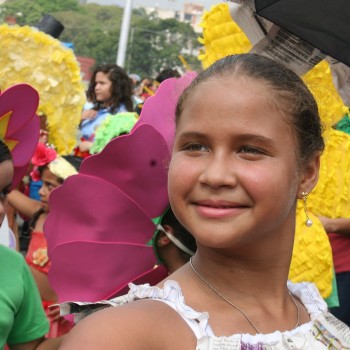
Carnival
Date: February
Carnival in Venezuela is celebrated in February, forty days before Easter Sunday every year. It is one of the most popular festivals in Venezuela. The Carnival is celebrated most elegantly in the coastal towns and villages than in any part of the country.
During the Carnival, Venezuela is lit up and decorated. People play with balloons filled with water instead of air and throw them at each other. Carnival of Venezuela continues for four days when people indulge in wearing new outfits.

Feria Del Sol
Date: February
Feria Del Sol ( Fair of The Sun) is an international cultural festival held in the city of Mérida every February of the year. The Feria festival is held alongside the carnival feast. The festival includes bull competitions, cultural expositions, commercial and zootechnic expositions, concerts, parades, sports, and a voting competition for La Reina Del Sol (The Queen of The Sun).
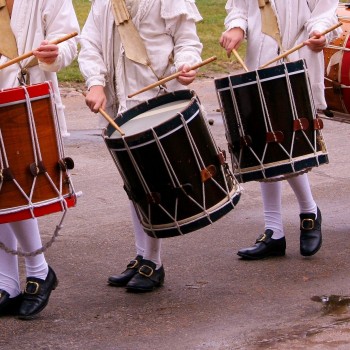
The Festival of San Juan
Date: June
The Bonfires of Saint John is a famous festival celebrated around Saint John's day's eve throughout many cities and towns in Venezuela. For this festival, people gather together and create large bonfires. From June 23, you can enjoy a night of drums that commemorate the saint's death; the night belongs to the wake of San Juan.
This captivating night runs to the sound of drums, dancing, and alcohol, activities preceding the next day's festivities in honor of the saint (The Birth of St. John the Baptist).

Dancing Devils of Yare
Date: May
The Dancing Devils of Yare is the name of a pagan-Christian celebration in San Francisco de Yare, Miranda state, Venezuela, on Corpus Christi day.
The Diablos Danzantes (Dancing Devils) festival is a wild spectacle in Venezuela one day before Corpus Christi, the 60th day after Easter, a Thursday in May or June, and on the holy day itself. Drums pound while hundreds of dancers clad in red devil costumes and diabolical masks writhe through the streets.
The festival is a blend of Spanish and African traditions. The origins lie in Spain, where devils’ images and masks were part of Corpus Christi feasts in medieval Andalucía.

El Hatillo
Date: October
The El Hatillo music festival takes place in October, 15km southeast of Caracas. This Venezuelan music festival features a mix of jazz, folk, and rock with growing international fame. El Hatillo is a town ten miles south of Caracas, providing an excellent atmosphere for the fortnight of festivities.
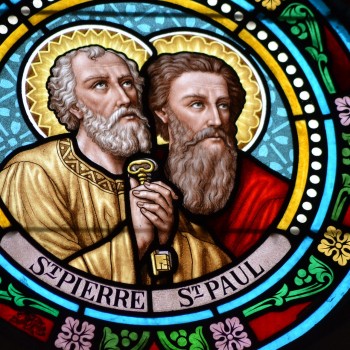
Festival of Saint Peter and Saint Paul
Date: June-July
The Festival of Saint Peter and Saint Paul celebrates the sacrifice of both Saint Peter and Saint Paul with a lively event where music, dancing, and folklore are mixed. Bonfires are lit on the roads throughout the province on the night before the celebration. Local people dress in traditional clothes and dance on every corner. A variety of delicious street food is also available, such as empanadas, yuca, and tajadas.
The Festival pays tribute to the two apostles—who are essential figures in Christianity.

Carúpano Carnival
Date: February- March
Carupano cultural carnival in Venezuela is a time for families to celebrate with a musical extravaganza. This traditional carnival is held to celebrate the start of Christian Lent. Similar to Mardi Gras, visitors can see creative participants who combine art and colorful fantasy in the streets of Carúpano.
They use various types of costumes, including the traditional garb of the royal court and robes. Colorful floats and street parties also characterize the celebration.
Attractions / Top Sights
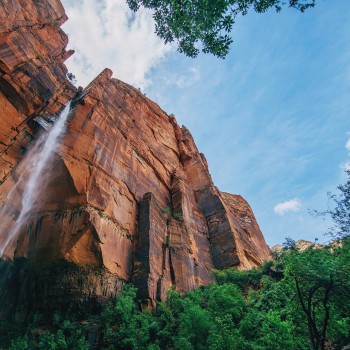
Angel Falls
When to visit: May and November
Angel Falls is one of the most popular tourist attractions in Venezuela as it is the highest uninterrupted waterfalls in the World. It is 978 meters (3,208 feet) tall and drops off the side of Auyantepui Mountain in Canaima National Park in Bolivar State. Located on the Gauja River, the falls were known initially as Kerepakupai Vená, or “fall from the highest point” by the local natives. The name was later changed to Angel Falls to honor Jimmie Angel, a U.S. aviator who was the first to fly over the falls.

Isla de Margarita
When to visit: March 12th to June 10th.
Isla Margarita, the largest island off the northeastern coast of Venezuela, Lying approximately 40 kilometers north of the mainland, is one of Venezuela's major tourist destinations for sun-seekers. The island's main attractions are the beautiful soft sand beaches, popular with both foreigners and Venezuelans.
Isla Margarita is a popular vacation destination for Venezuelans because of shopping at the duty-free port.
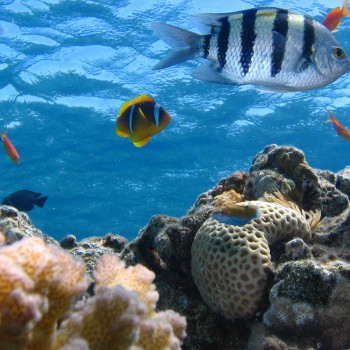
Los Roques Archipelago National Park
When to visit: December to April
Los Roques Archipelago National Park was created in 1972 by the Venezuelan government to protect a marine ecosystem of extraordinary beauty and ecology. It is the largest marine park in the Caribbean Sea. The almost untouched coral reefs host some of the most beautiful underwater fauna and flora of the Caribbean. The park has stunning beaches of white sand and multicolor, crystalline, warm waters, making it a diving, sailing, and fishing paradise. The main island is Gran Roque, which has a few small villa-style hotels that are small but comfortable.
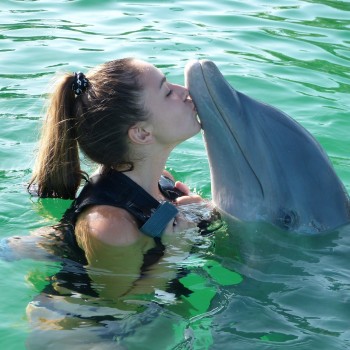
Mochima National Park
When to visit: December to April
Mochima National Park is located on the northeastern coast. It is designed to protect the marine environment and the forests of the Turimiquire mountains.
Mochima National Park, named after a nearby town, is also popular with snorkelers and divers with excellent underwater spots, including exploring three shipwrecks within a 30- to 40-minute boat ride from Puerto la Cruz.

Medanos de Coro National Park
The dunes at Medanos de Coro National Park are a spectacular sight located in the tropical country of Venezuela, in the jurisdiction of the Miranda and Falcón Municipalities of the Falcón State, and covers an area of 91,280 hectares, of which 42,160 they are from continental lands and more than 49,120 from marine surfaces.
The dunes, some of which are 40 meters (120 feet) high, are in colorful shades of orange and yellow. High winds mean they are constantly changing shape. The area is quite dry, so there’s limited vegetation and wildlife to see. The dunes are a popular place to go sandboarding and can also be explored on hired camels.

Canaima National Park and the Gran Sabana
When to visit: October and November
Canaima National Park covers three million hectares and is listed as a UNESCO World Heritage Site.
The park encompasses the high plateau of La Gran Sabana and includes more than 100 tepuis (table-top mountains), which rise more than 1,000 meters above the savannahs.
Highlights in this area are the numerous waterfalls spread across the entire area, particularly in the Gran Sabana near the Brazilian border. Swimming at the base of the waterfalls is one of the highlights and can provide a refreshing escape from the heat of the midday sun during the dry season.
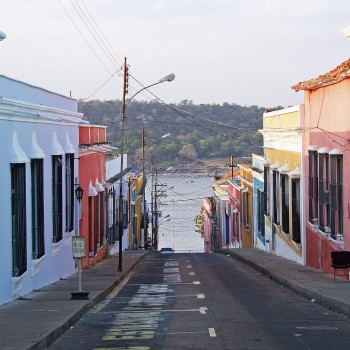
Choroni
When to visit: December to April
Choroni is generally known as one of Venezuela’s best Caribbean beaches, though the town itself sits slightly inland, boasting some fine colonial houses around a quiet central plaza.
Choroni also makes a good base for bird-, plant- and wildlife-watchers who want to explore the cloud forest and lowland jungles of Henri Pittier National Park. Asides from monkeys, snakes, and deer, the park has 500 bird species and 200 butterflies.

